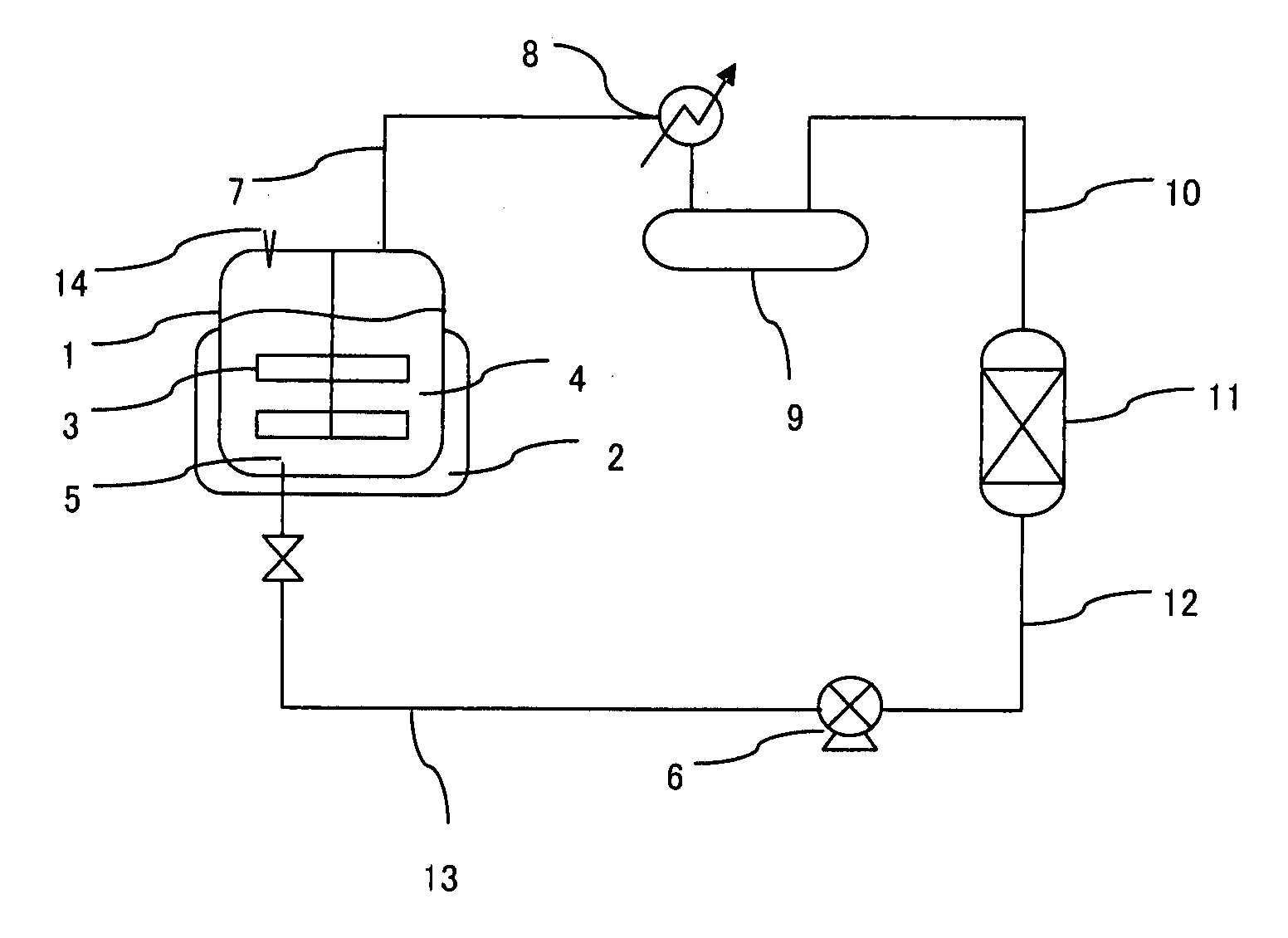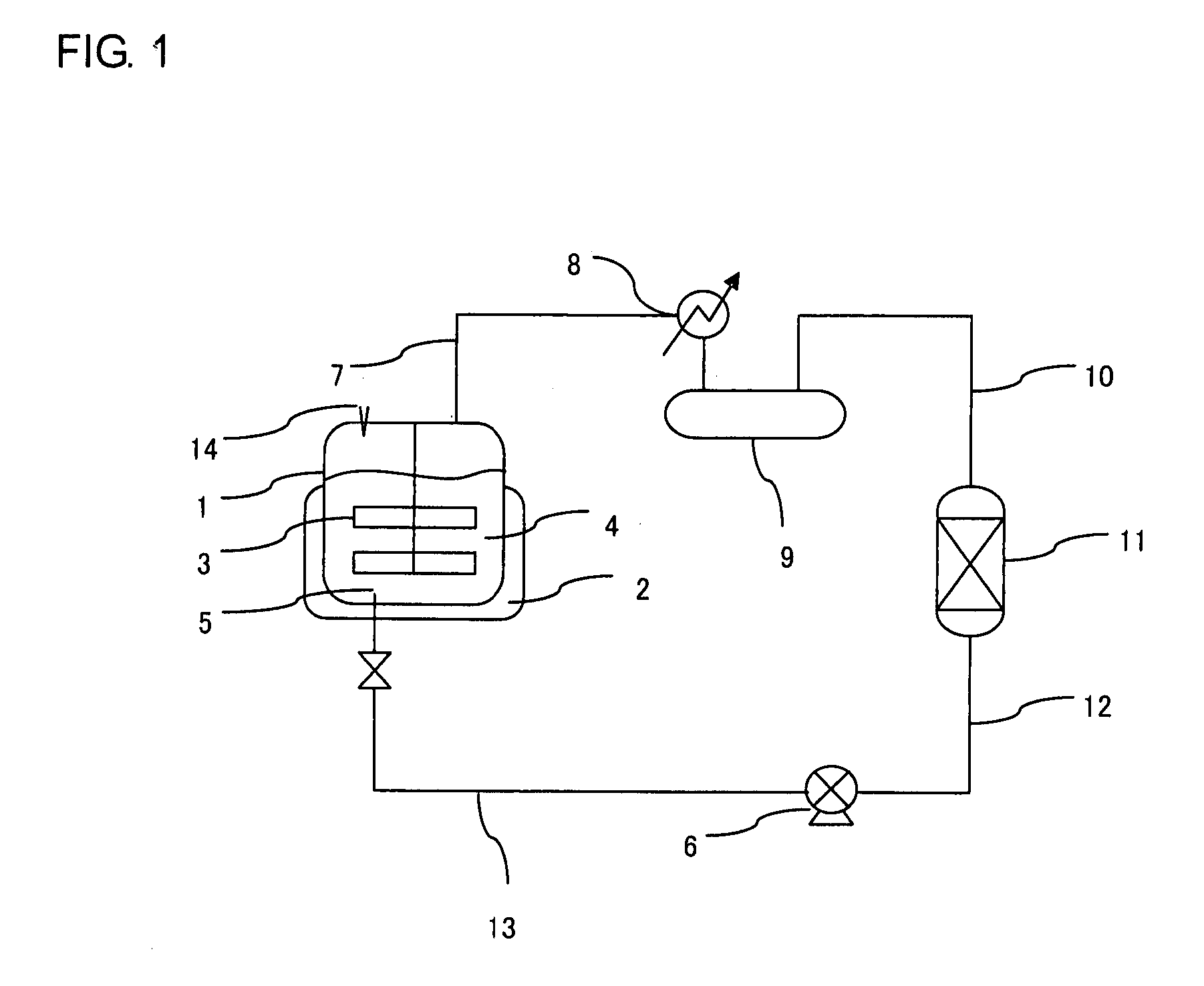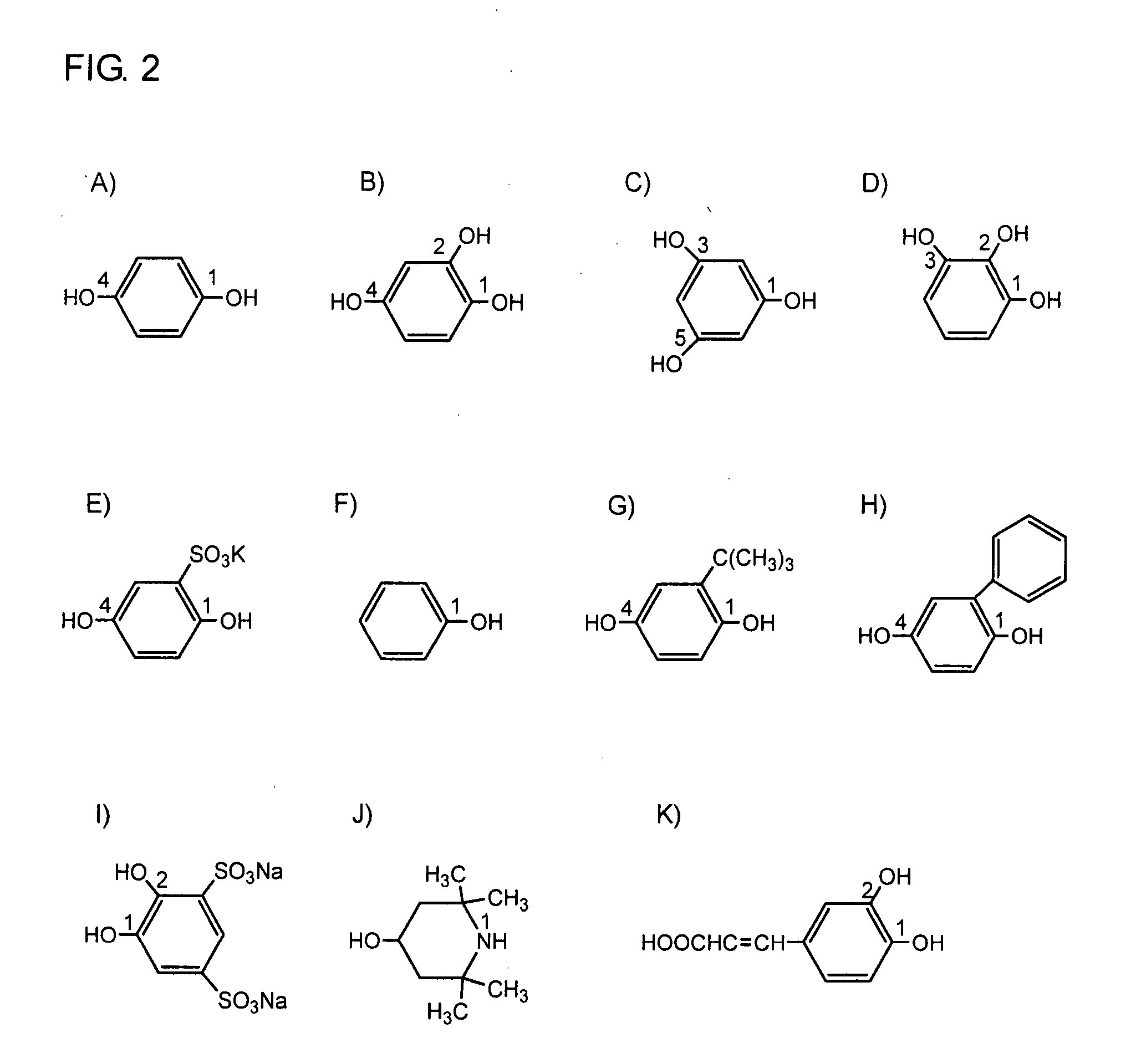Production method of toner for developing electrostatic image
- Summary
- Abstract
- Description
- Claims
- Application Information
AI Technical Summary
Benefits of technology
Problems solved by technology
Method used
Image
Examples
example 1
[0170] 75 parts of styrene and 25 parts of n-butyl acrylate as monovinyl monomers, 7 parts of carbon black (product name: #25BS; manufactured by: Mitsubishi Chemical Corporation) as a black colorant, 1 part of a charge control resin (a styrene / acrylic resin; product name: FCA-207P; manufactured by: Fujikura Kasei Co., Ltd.) and 5 parts of dipentaerythritol hexamyristate as a release agent were agitated, mixed together and uniformly dispersed to prepare a polymerizable monomer composition.
[0171] Separately, an aqueous solution of 4.8 parts of sodium hydroxide dissolved in 50 parts of ion-exchanged water was gradually added to an aqueous solution of 8.5 parts of magnesium chloride dissolved in 170 parts of ion-exchanged water while agitating to prepare a magnesium hydroxide colloid (hardly water-soluble metal hydroxide colloid) dispersion liquid.
[0172] The polymerizable monomer composition was charged into the magnesium hydroxide colloid dispersion liquid thus obtained and agitated ...
example 2
[0183] A toner of Example 2 was produced in the same condition as in Example 1 except that the added amount of the potassium hydroquinone sulfonate represented by the Formula 10, which is an inhibitor of small diameter microparticle production, was changed to 0.3 part.
example 3
[0184] A toner of Example 3 was produced in the same condition as in Example 1 except that the inhibitor of small diameter microparticle production was altered to hydroxyhydroquinone represented by the following Formula 11:
PUM
| Property | Measurement | Unit |
|---|---|---|
| Fraction | aaaaa | aaaaa |
| Percent by mass | aaaaa | aaaaa |
| Molecular strain energy | aaaaa | aaaaa |
Abstract
Description
Claims
Application Information
 Login to View More
Login to View More - R&D
- Intellectual Property
- Life Sciences
- Materials
- Tech Scout
- Unparalleled Data Quality
- Higher Quality Content
- 60% Fewer Hallucinations
Browse by: Latest US Patents, China's latest patents, Technical Efficacy Thesaurus, Application Domain, Technology Topic, Popular Technical Reports.
© 2025 PatSnap. All rights reserved.Legal|Privacy policy|Modern Slavery Act Transparency Statement|Sitemap|About US| Contact US: help@patsnap.com



